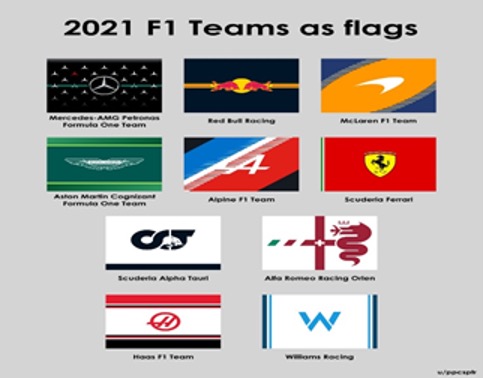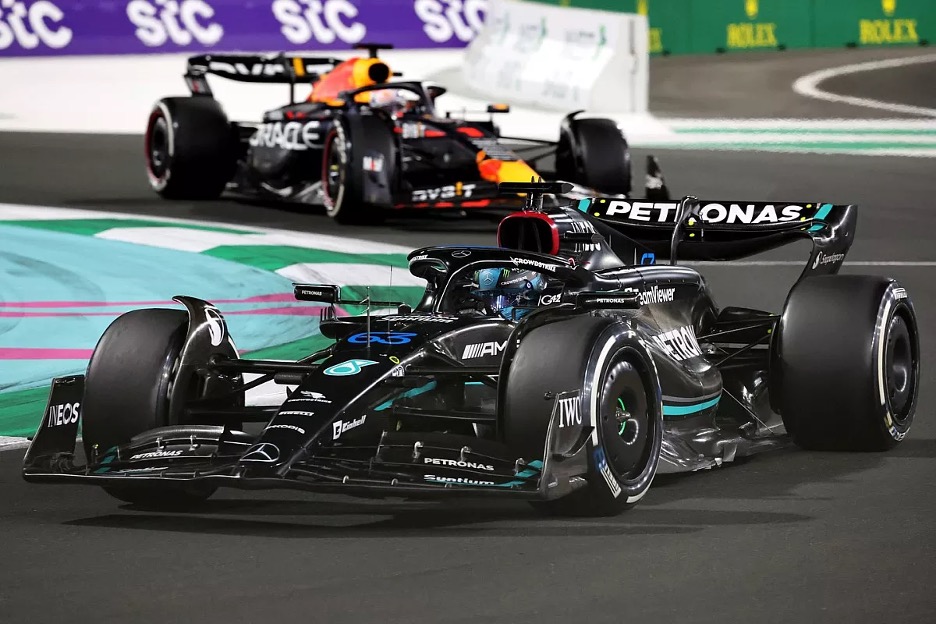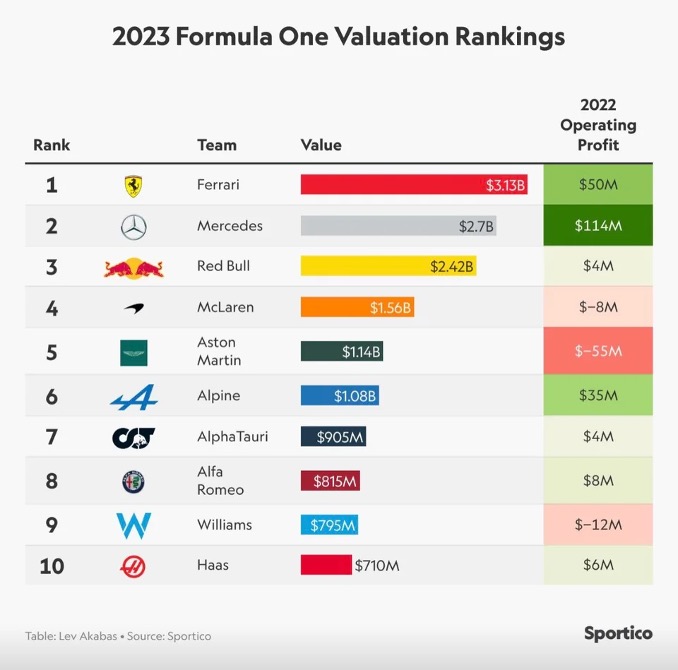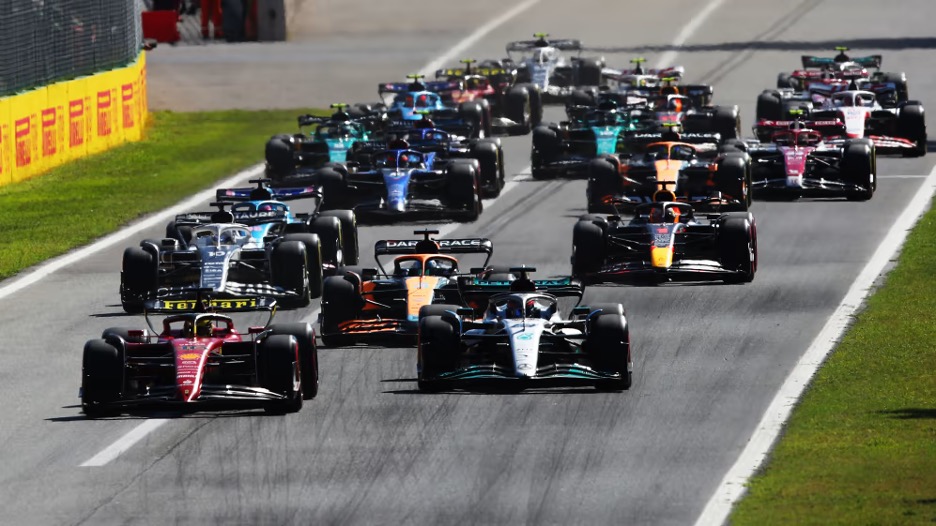The fundamental principle of sports is equality, including equality of chance, opportunity, eligibility, regulation, and competitiveness. The entire spirit of sport is undermined if equality is not considered.
One of the most well-liked sports in the world is Formula One. It is the top division of single-seat Formula Racing internationally. The Fédération Internationale de l’Automobile (FIA), founded on June 20, 1904, is the organisation that oversees Formula One. On May 13, 1950, the World Drivers’ Championship marked the formal debut of Formula One at Silverstone in the United Kingdom. In 1981, it was renamed the FIA Formula One World Championship. Throughout a season, numerous events called Grand Prix are staged all around the world. A Formula One season is the sum of these events. The set of guidelines that all competing teams must follow is referred to as the “Formula”. “Grand Prize” is the English translation of the French word “Grand Prix”. The FIA assigns a track a grade of “1” for the races. Therefore, Formula One was chosen as the name.

Early Life & Education
With its addictive combination of speed, technology, and high-stakes rivalry, Formula One, the pinnacle of motorsport, enthrals millions of spectators worldwide. Formula One represents the epitome of driving prowess, from the thunderous scream of the engines to the exhilarating clashes on the circuit. However, beyond the glitzy exterior lies a world of complex schemes, violent rivalries, and intense financial manoeuvring. This article delves into the fascinating world of Formula One, tracing its origins, examining the intricate financial issues that drive the competition, and examining the sport’s unrelenting pursuit for victory.
Birth of a Racing Legend
The first World Championship race took place in 1950, but the history of Formula One dates to the early 20th century. The sport has evolved over time, embracing technological advancements and witnessing the rise of renowned drivers such as Juan Manuel Fangio, Ayrton Senna, Michael Schumacher, and Lewis Hamilton. With its distinctive blend of cutting-edge engineering and thrilling rivalry, Formula One has grown to be a global phenomenon.
The Financial Engine of Formula One
Behind the roaring engines and screeching tyres lies an economic mechanism that fuels the sport’s high-octane action. The main sources of revenue for Formula One are sponsorship agreements, media rights, race hosting costs, and prize money payouts. Teams secure lucrative sponsorship deals with major corporations, enabling them to fund their operations and invest in new technology.
Formula One team budgets are derived from sponsorships and the payments from Formula 1 include Pay Drivers and Manufacturers.

The most profitable source of revenue for F1 teams is sponsorships, followed by prizes and incentives received directly from Formula 1. Additionally, some F1 teams receive payments from manufacturers or what is known as a “pay driver,” such as Lance Stroll or Nicholas Latifi, to boost their budgets.
How much do F1 sponsors contribute?
In a somewhat catch-22 season, the contributions from F1 sponsors can range from as little as €500k to as high as €50M. The amount of sponsorship money a team can request depends on their level of success. However, to be successful, they must also be able to invest in their performance on the grid. A firm interested in sponsoring a Formula One team can do so for as low as €500k annually, but they would not have their logo on the car or the driver. It would cost between €3-5M per year to have a company’s emblem on a Ferrari, Mercedes, or Red Bull car, compared to a cool €1M for one of the midfield cars.
The strength and reputation of the team often play a role in title sponsorships, which can cost between €20 and €50 million annually. For example, during the 2021 F1 season, Mercedes received over 20% of total TV coverage, which can influence their sponsorship fees. According to rumours, Petronas contributed €42 million to their Petronas-Mercedes collaboration, while Cognizant reportedly spent €35 million for their Cognizant-Aston Martin arrangement. The recent sponsorship deal between Oracle and Red Bull Racing is estimated to cost $300 million over five years.
How do Formula 1 payouts work?
The second most lucrative source of income for Formula 1 teams is payments. Each team receives about $36 million USD for participating in the championship, which comes from sources such as TV rights and circuit sponsorship. Additional payments are also made based on how teams place in the Constructors Championship. Mercedes won $61 million USD for winning the championship in 2021, compared to Williams, who finished last, who only received $13 million USD. Ferrari, being a seasoned team, received an additional $68 million USD solely as a reward for their past efforts. Another payment that may seem peculiar is the “Constructors’ Championship Bonus,” with McLaren, Red Bull, Mercedes, and Ferrari each receiving $35 million USD.

What is a pay driver in Formula 1?
In Formula One, a pay driver is a competitor who secures their place from attractive sponsors rather than receiving compensation. Although pay drivers have been part of motorsport for a long time, they often face more criticism than others.
How do Formula 1 Constructors make money from Car manufacturers?
F1 is primarily used by car manufacturers as a marketing strategy. Fans who wish to be associated with a team’s success may be enticed to purchase a vehicle from the same manufacturer if the team is successful. For example, Red Bull supporters might choose a Honda car over a Mercedes or an Alpine car. In order to boost their team’s quest for another Constructors Championship in 2019, Daimler, the parent company of Mercedes, contributed $80 million USD to the team’s funds.
Additionally, selling engines to other teams on the grid brings significant money for constructors. For instance, Ferrari sells its engines to Alfa Romeo and Haas, while Mercedes sells its engines to McLaren, Aston Martin, and Williams.
How does Formula One make money?
How does Formula 1 generate enough revenue to cover its expenses, including millions of dollars in prize money and legacy payments? The majority of F1’s revenue comes from selling TV rights worldwide, thanks to a deliberate attempt by owners Liberty Media to break into the US market and increase the number of people watching races through projects like the Netflix series “Drive to Survive”. In 2020, Liberty Media’s bank account received a staggering $587 million from international television contracts, and future years are expected to see further growth. For the purpose of transmitting images across the globe, Formula 1 offers a Global Feed, which is sold to rights holders who then include the coverage in their subscription services. The cost of the Global Feed varies greatly depending on the country.
For instance, fans in Indonesia pay the equivalent of 20 GBP for a full year of coverage, while in the UK, Sky coverage costs about 30 GBP per month. Fees paid by event organisers to authorise races are F1’s second-largest source of income. The average fee for hosting an F1 race is about $31 million USD, however storied locations like Monaco pay far less. Because new locations with questionable human rights records, including Qatar and Saudi Arabia, pay more than average, sceptics have changed the expression “we race as one” to “we race for money.” The sale of event tickets and on-track sponsorship from companies like Rolex and Pirelli make up the third largest source of income for Formula 1.

Conclusion
Formula One continues to captivate motorsport fans all over the world with its combination of speed, strategy, and financial complexity. The high-octane action of the sport is kept a reality by its financial engine, which is fed by sponsorship agreements, TV rights, and race hosting costs. Fans eagerly anticipate the next instalment of this gripping drama, where teams are driven to push the boundaries of human and technical capabilities in the pursuit of greatness and success, as Formula One forges ahead into the future.
Written by – Sneha Jain
Edited by – Yashvi Vasani
